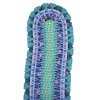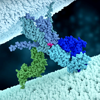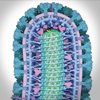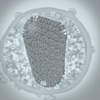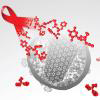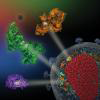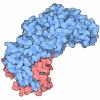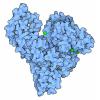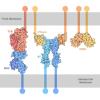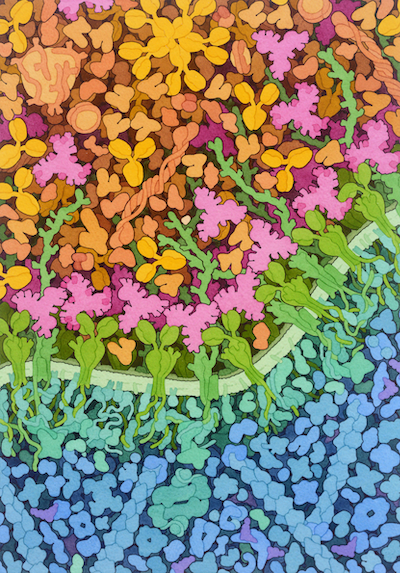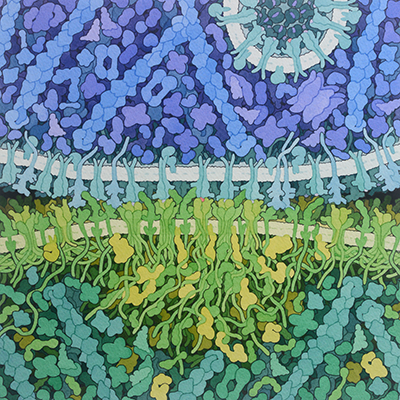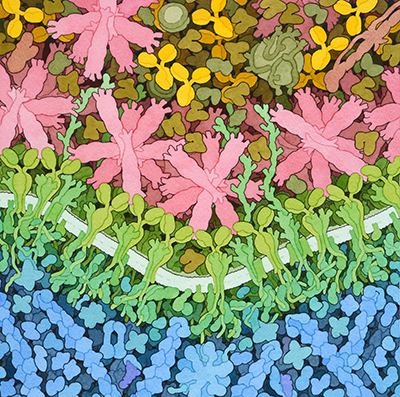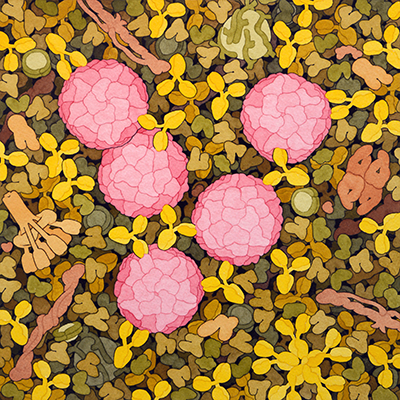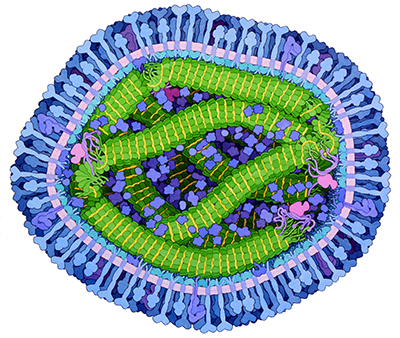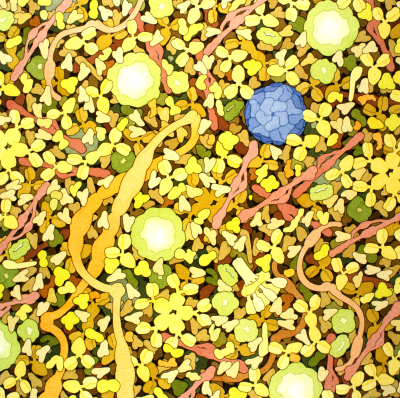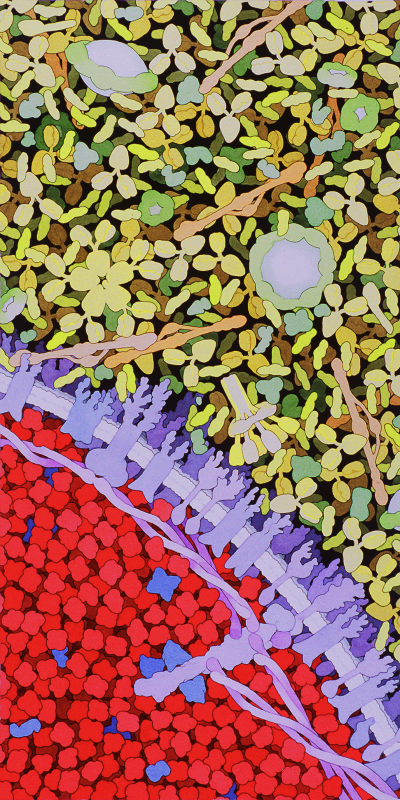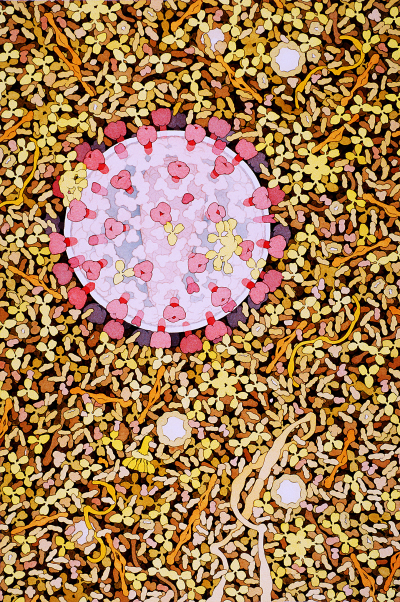 |
Antibodies
Antibodies search for foreign molecules in the blood
|
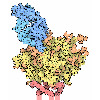 |
Broadly Neutralizing Antibodies
Structural studies of broadly neutralizing antibodies are paving the way to vaccines for HIV, influenza and RSV
|
 |
Chimeric Antigen Receptors
T cells may be engineered with chimeric antigen receptors to attack cancer cells.
|
 |
Dermcidin
Small toxic peptides help protect us from bacterial infection
|
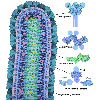 |
Ebola Virus Proteins
Structures of ebola virus proteins are giving new hope for fighting this deadly virus
|
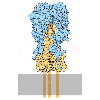 |
Hemagglutinin
Influenza virus binds to cells and infects them using hemagglutinin
|
 |
Influenza Neuraminidase
Neuraminidase is an important target for influenza drugs
|
 |
Interferons
Interferons mobilize defenses against viral infection
|
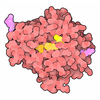 |
Legumain
Legumain cleaves proteins, and can also put them back together.
|
 |
Lysozyme
Lysozyme attacks the cell walls of bacteria
|
 |
Major Histocompatibility Complex
MHC displays peptides on the surfaces of cells, allowing the immune system to sense the infection inside
|
 |
Measles Virus Proteins
Six proteins in measles virus work together to infect cells.
|
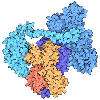 |
MHC I Peptide Loading Complex
Several steps of quality control optimize the peptides that are displayed by MHC I.
|
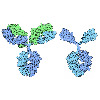 |
Nanobodies
Unusual antibodies from camels are useful in research and medicine
|
 |
PD-1 (Programmed Cell Death Protein 1)
PD-1 and its ligands are a new target for cancer therapy
|
 |
RSV Fusion Glycoprotein
Structures of the fusion glycoprotein from respiratory syncytial virus (RSV) were used to engineer effective vaccines to fight viral infection.
|
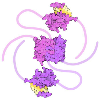 |
SARS-CoV-2 Nucleocapsid and Home Tests
Home test kits for SARS-CoV-2 test for the presence of nucleocapsid, the protein that packages the viral genome in infectious virions.
|
 |
SARS-CoV-2 Spike and Antibodies
Structural biologists are revealing the many ways that antibodies recognize SARS-CoV-2
|
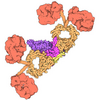 |
Secretory Antibodies
Secretory immunoglobulins are our most abundant antibodies, providing a first line of defense against pathogens.
|
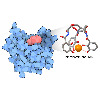 |
Siderocalin
Our innate immune system starves bacteria of iron using siderocalin.
|
 |
Small Interfering RNA (siRNA)
Our cells continually look for pieces of double-stranded RNA, a possible sign of viral infection
|
 |
T-Cell Receptor
Lymphocytes use T-cell receptors to patrol the body for foreign molecules
|
 |
Tissue Transglutaminase and Celiac Disease
Tissue transglutaminase staples proteins together by forming a chemical crosslink.
|
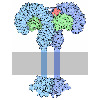 |
Toll-like Receptors
Toll-like receptors warn us about bacterial and viral infection
|
 |
ZAR1 Resistosome
Plants protect themselves from infection with immune system machines such as the resistosome
|
 |
Antibodies
Antibodies search for foreign molecules in the blood
|
 |
Broadly Neutralizing Antibodies
Structural studies of broadly neutralizing antibodies are paving the way to vaccines for HIV, influenza and RSV
|
 |
Chimeric Antigen Receptors
T cells may be engineered with chimeric antigen receptors to attack cancer cells.
|
 |
Dermcidin
Small toxic peptides help protect us from bacterial infection
|
 |
Ebola Virus Proteins
Structures of ebola virus proteins are giving new hope for fighting this deadly virus
|
 |
FOXP3
A master transcriptional regulator of immune tolerance
|
 |
Hemagglutinin
Influenza virus binds to cells and infects them using hemagglutinin
|
 |
Influenza Neuraminidase
Neuraminidase is an important target for influenza drugs
|
 |
Interferons
Interferons mobilize defenses against viral infection
|
 |
Legumain
Legumain cleaves proteins, and can also put them back together.
|
 |
Lysozyme
Lysozyme attacks the cell walls of bacteria
|
 |
Major Histocompatibility Complex
MHC displays peptides on the surfaces of cells, allowing the immune system to sense the infection inside
|
 |
Measles Virus Proteins
Six proteins in measles virus work together to infect cells.
|
 |
MHC I Peptide Loading Complex
Several steps of quality control optimize the peptides that are displayed by MHC I.
|
 |
Nanobodies
Unusual antibodies from camels are useful in research and medicine
|
 |
PD-1 (Programmed Cell Death Protein 1)
PD-1 and its ligands are a new target for cancer therapy
|
 |
RSV Fusion Glycoprotein
Structures of the fusion glycoprotein from respiratory syncytial virus (RSV) were used to engineer effective vaccines to fight viral infection.
|
 |
SARS-CoV-2 Nucleocapsid and Home Tests
Home test kits for SARS-CoV-2 test for the presence of nucleocapsid, the protein that packages the viral genome in infectious virions.
|
 |
SARS-CoV-2 Spike and Antibodies
Structural biologists are revealing the many ways that antibodies recognize SARS-CoV-2
|
 |
Secretory Antibodies
Secretory immunoglobulins are our most abundant antibodies, providing a first line of defense against pathogens.
|
 |
Siderocalin
Our innate immune system starves bacteria of iron using siderocalin.
|
 |
Small Interfering RNA (siRNA)
Our cells continually look for pieces of double-stranded RNA, a possible sign of viral infection
|
 |
T-Cell Receptor
Lymphocytes use T-cell receptors to patrol the body for foreign molecules
|
 |
Tissue Transglutaminase and Celiac Disease
Tissue transglutaminase staples proteins together by forming a chemical crosslink.
|
 |
Toll-like Receptors
Toll-like receptors warn us about bacterial and viral infection
|
 |
ZAR1 Resistosome
Plants protect themselves from infection with immune system machines such as the resistosome
|





























